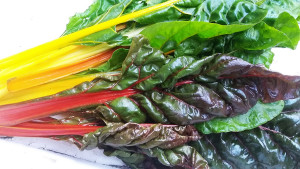 Is it a new term, yogan or vegi?! In any case, it’s a fusion of vegan food with the yogi sattvic diet: conscious eating. This page is an exploration of tasty and complete nutrition for the vegan yogi, and everyone.
Is it a new term, yogan or vegi?! In any case, it’s a fusion of vegan food with the yogi sattvic diet: conscious eating. This page is an exploration of tasty and complete nutrition for the vegan yogi, and everyone.
recipes for prana – simple recipes for home cooking
Eat for your Dosha – Cooking and Eating Workshop
Less and less there is confusion around veganism, but the sattvic dimension is often novel. No worry: it’s all good and about enjoying food and life. It’s not just about the health of the physical body but also the freedom from aspects of traditional diet that drag us down mentally, emotionally and spiritually. If something about the vegan yogi diet appeals, it’s good to make a few changes such as actively seeking organic or cutting out meat/cheese a little at a time. In addition, learning to cook a few different dishes gives confidence. Growing some of your own food really helps, as we do at Viveka Gardens – join us for yoga and food growing retreats.
Why vegan?
The traditional yogic diet does include dairy (but not eggs; an egg is an animal cell). In rural areas in India you can still see how preciously a cow is tended, with fresh forage from the forest and lovingly washed. Cows are sacred and milk is a God-related food. But in the West, as we know, the reality of dairying is different. Doing without milk, butter and cheese is the conscious, ethical continuation of lacto-vegetarianism.
What does sattvic mean?
Sattva is a state of wholesome, pure, right-feelingness. It’s like when you clean the house, things are put away, the light comes in: you feel you can relax and clear your mind. Imagine this in other areas of your life: your work, your relationships, your leisure. It would all flow more easily. The point is for yogis, in sattva your energy rises and your consciousness rises. As (some) Christians put it, ‘cleanliness is next to Godliness’. And it all starts with what you put in your stomach: good, tasty, fresh, wholesome food, full of the right nutrition. You are what you eat, and for yogis a sattvic diet is fundamental.
Two other terms:
rajas – chaotic, noisy, over-busy, over-stimulating, pushing. You can see here how this could relate to a state of mind, or a place, or music, for instance. In terms of diet this would be food with too much chili (a little can be good if a food is heavy, to give digestive fire), or stimulants such as tea and coffee. Garlic, onions and all the allium family (leeks and chives, et cetera) are stimulating. Sugar and salt are used in moderation or sometimes omitted as a kind of fast
tamas – heavy, dull, stubborn, lethargic, dark. This means food cooked the previous day, unripe or over-ripe fruits, veg lacking freshness and stale, rotten or putrid food. Frozen or tinned food is avoided. Over-eating, eating at the wrong time and not sitting down to eat are considered tamasic. Fermented foods are tamasic, anything alcoholic and so including vinegar and items made with it, like pickles. Mouldy food and mushrooms themselves are tamasic as they feed on rotting matter. A sattvic diet is plant based: a leaf is basically a solar panel. We take our energy at the most vibrant possible: from the source closest to the Sun. Of course meat, a piece of dead animal, is also tamasic.
Where do these ideas come from?
The Bhagavad Gita is a classic text of the stream of Vedantic knowledge and considered a ‘Bible’ of how to live. Chapters 14 & 17 (of 18) deal with the three gunas – rajas, tamas and sattva – and how to rise above them. Sattva is to be striven for, and then even that is dropped as we come close to unity with God. In all this, however, it’s good to be gentle and not rigid. As Jesus said, it’s more important what comes out of your mouth than goes in it, and eat what is offered in hospitality.
Nonetheless, it is good to stand up for a gentle diet, gentle on our fellow creatures, and gentle on the planet. The fact is that God’s creatures are often seen and treated as units of production or to be exploited. Over-consumption and the over-processing of meat, in particular, has been shown to cause disease over and over, and greedy husbandry has led to animal disease that has become transgenic (bird flu, possibly Covid-19, Jacob-Creuzfeld, foot and mouth…).
What do you eat?
- protein: pulses, seeds, nuts, tofu (but not too much as it is on the heavy, tamasic side)
- carbohydrates: whole grains (rice, quinoa, millet, buckwheat, oats, barley and many more), bread
- fruit and veg: lots!
- fats: a whole range of lovely oils – olive, rapeseed, hemp, sunflower, coconut…
- spices and herbs used generously and judiciously
With these you can have a complete diet nutritionally. Gradually you learn more about which foods are particularly rich sources of minerals and vitamins, and how to combine grains and pulses.